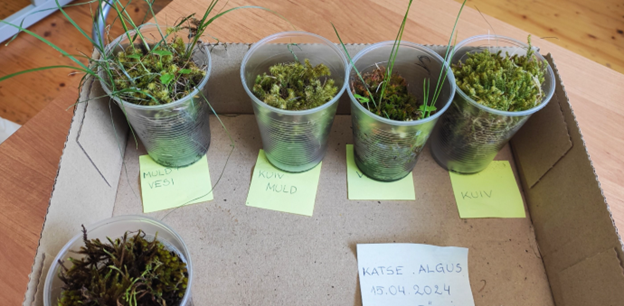To make the contents of the Boxes even better, we have tested the Boxes.
In Estonia, a number of boxes were tested in Martna Primary School in the spring. Fifty students (including 24 girls) took part in the testing under the guidance of seven teachers.
Here’s a brief overview of which boxes have been tested recently:
MULTIPLICATION
Does the multiplication table need to be learned in the classroom using a textbook or a workbook? Certainly not. It can be done in a completely different way by integrating movement, crafts, mathematics, functional reading skills, creative writing, working according to a guide, developing teamwork skills, etc.
There were activities both in the classroom and in the yard. For example, students were able to acquire new knowledge of origami, the folding of which was aimed, on the one hand, at embedding the multiplication table, and on the other hand, students were able to test their functional reading skills, because behind the correct answer to each operation was the correct answer to a question based on the text – this way the students could also evaluate themselves and test their knowledge. Outdoors, the movement game, created a lot of joy and excitement because, with the principle of bingo and the embedding of the multiplication table, students were able to test their knowledge in pairs.

DINOSAURS
What is palaeontology? What does a palaeontologist do? What do you know about dinosaurs? Who was Mary Anning, who was called the Princess of Palaeontology?
These were questions that students were looking for answers to. The students’ learning path began with learning the concept of palaeontology and getting to know and retelling Mary Anning’s story.
Further, they were already incarnated as young palaeontologists themselves and began to prepare the excavation area for fossils in order to carry out excavations. This time, young scientists managed to find dinosaur footprints, teeth, and skulls. This was followed by studying the findings, analysing them, documenting the found material, establishing a hypothesis, checking its correctness, and drawing conclusions. All this was done using the natural science method.
Groups of young palaeontologists then reported their research papers to other classmates. Finally, it was necessary to draw different dinosaurs from the shadows of their skeletons and add introductory data that had to be searched in the vastness of the Internet.
Thus, different subjects were integrated into the learning activities this time: biology, geography, Estonian language and literature, art, mathematics, history, and computer science. In addition to all this, it was no less important to practice cooperation, communication and presentation skills.

WATERMILL
First, the students drew and talked about where the power of water could be felt.
Next, the children went outside to practically test the power of water. It was much fun to direct a water jet to a table tennis ball through various means (hoses, cups, watering cans, straws, water guns, etc.). The path of rolling across the ball was measured, and it was recorded whether the ball rolled fast or slow. As a result of the experiment, the children found that a person can make the power of water work for his benefit. To do this, it is necessary to build a water wheel that will put into operation a watermill. So, too, 1st graders crafted two models of waterwheels. Both waterwheels worked perfectly.
After experiments outdoors, the children listened to the fairy tale “The Mill Sprite” in class. In this story, the Mill Sprite helped repair a watermill that had stopped a girl from working in a mill. According to the fairy tale, the mill, the characters and the setting were completed, and the story was presented as a play.
Watch the video to see how the water force sets the balls in motion:
GROWING THE MOSS
The project started with the teacher reading the story “Green Embroidery.” From the story, we learned how important the green moss carpet embroidered by fairy maidens is to nature and people.
They then went outside to find out what kind of moss was and where it grew. During the study visit, various “mosses” were found, and it turned out that some of them were not mosses but instead lichens.
In order to find out how the moss grows, the moss was made to grow inside five different tops: 1. only dry moss, 2. water and moss, 3. dry soil and moss, 4. water, soil and moss, 5. water and moss, and the latter was also covered from the light.
Since the moss grows very slowly, it was stocked for several weeks for its experiment. From time to time, they went to find out how the moss was doing and made sure that the moss did not remain dry when topped with water.
Two weeks later, it was decided to stop the experiment. Indeed, the moss grows so slowly that no visible results were obtained. However, it was learned what the plants that came with moss needed to grow: soil, water and sun. Before the moss tops were emptied, the roots of plants and moss inside the soil were also inspected.
Over the weekend, the moss of the 4th cup and some of the plants had dried up in the warm sun – too much sunshine and days off can also be harmful!

If you also want to use these boxes for your studies, you can find them on our website.
Enjoy experimenting!
